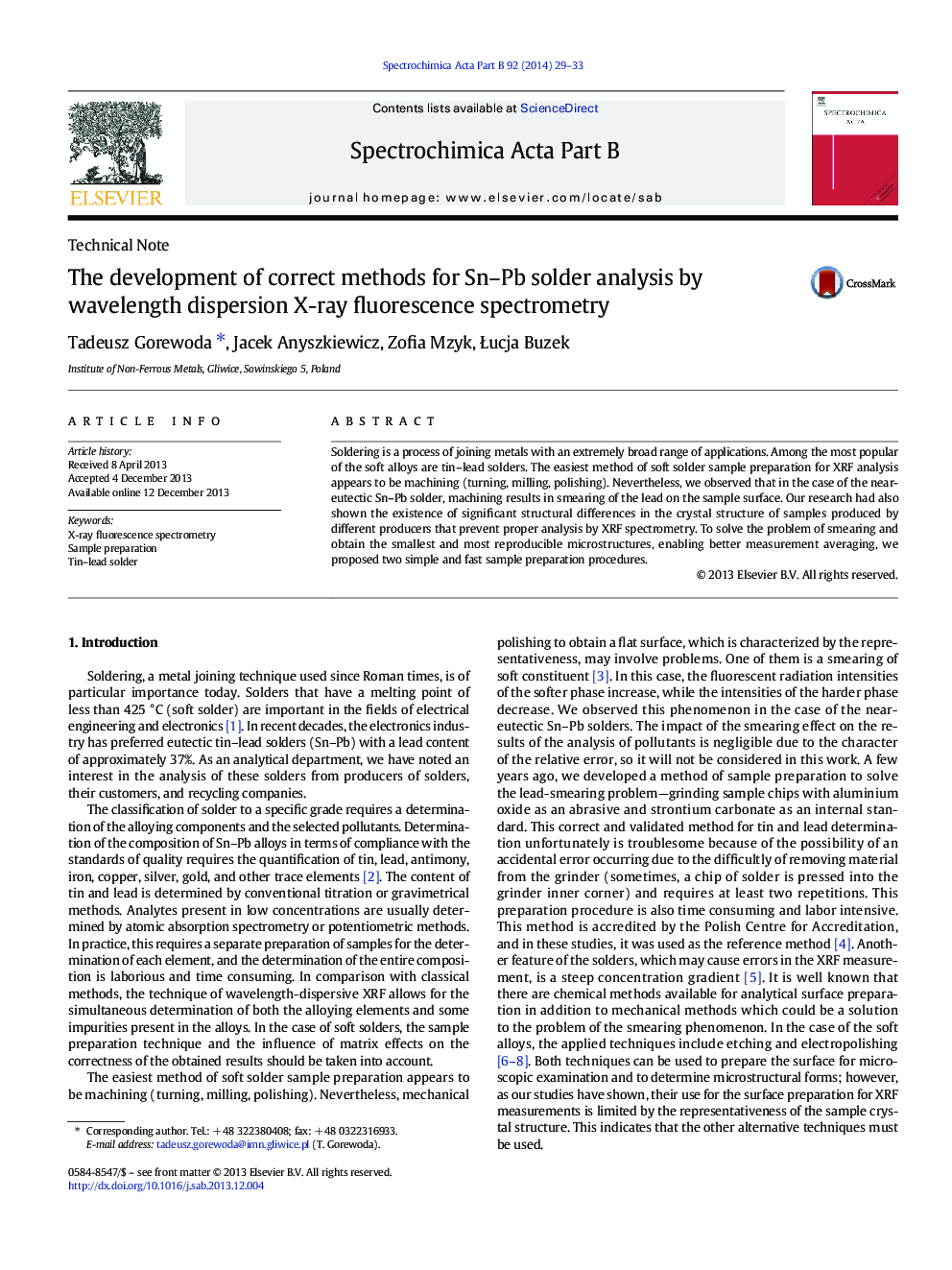| Article ID | Journal | Published Year | Pages | File Type |
|---|---|---|---|---|
| 1239704 | Spectrochimica Acta Part B: Atomic Spectroscopy | 2014 | 5 Pages |
•A critical step of Sn–Pb alloy analysis by XRF is the sample preparation step.•The lead-smearing effect and a size of the microstructures are important issues.•A new source of error —the size of microstructures versus the critical thickness•The microstructure size should be less than the critical thickness.•A new method of Sn–Pb sample preparation based on melting and rapid cooling
Soldering is a process of joining metals with an extremely broad range of applications. Among the most popular of the soft alloys are tin–lead solders. The easiest method of soft solder sample preparation for XRF analysis appears to be machining (turning, milling, polishing). Nevertheless, we observed that in the case of the near-eutectic Sn–Pb solder, machining results in smearing of the lead on the sample surface. Our research had also shown the existence of significant structural differences in the crystal structure of samples produced by different producers that prevent proper analysis by XRF spectrometry. To solve the problem of smearing and obtain the smallest and most reproducible microstructures, enabling better measurement averaging, we proposed two simple and fast sample preparation procedures.
